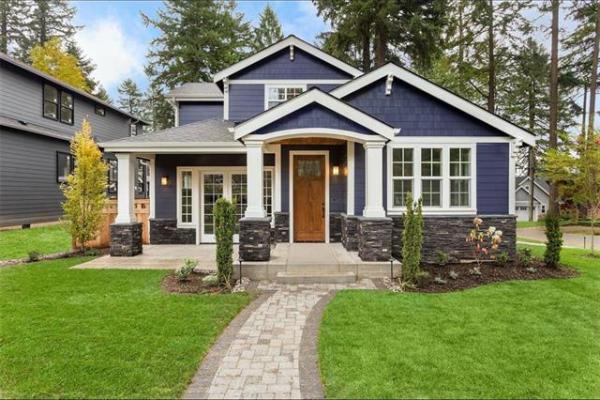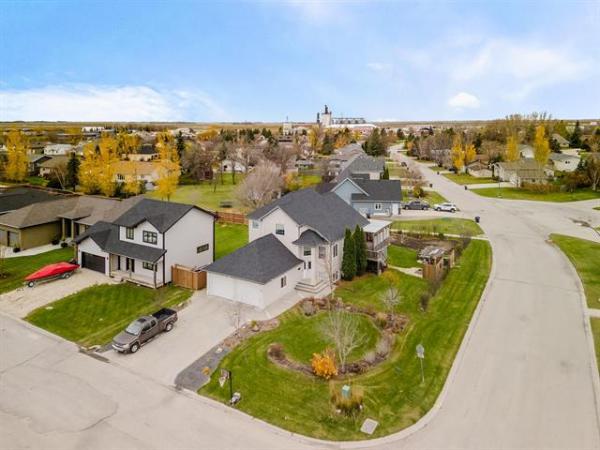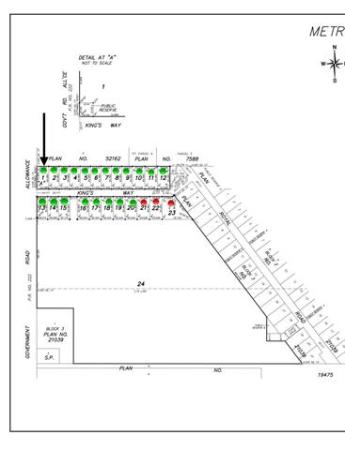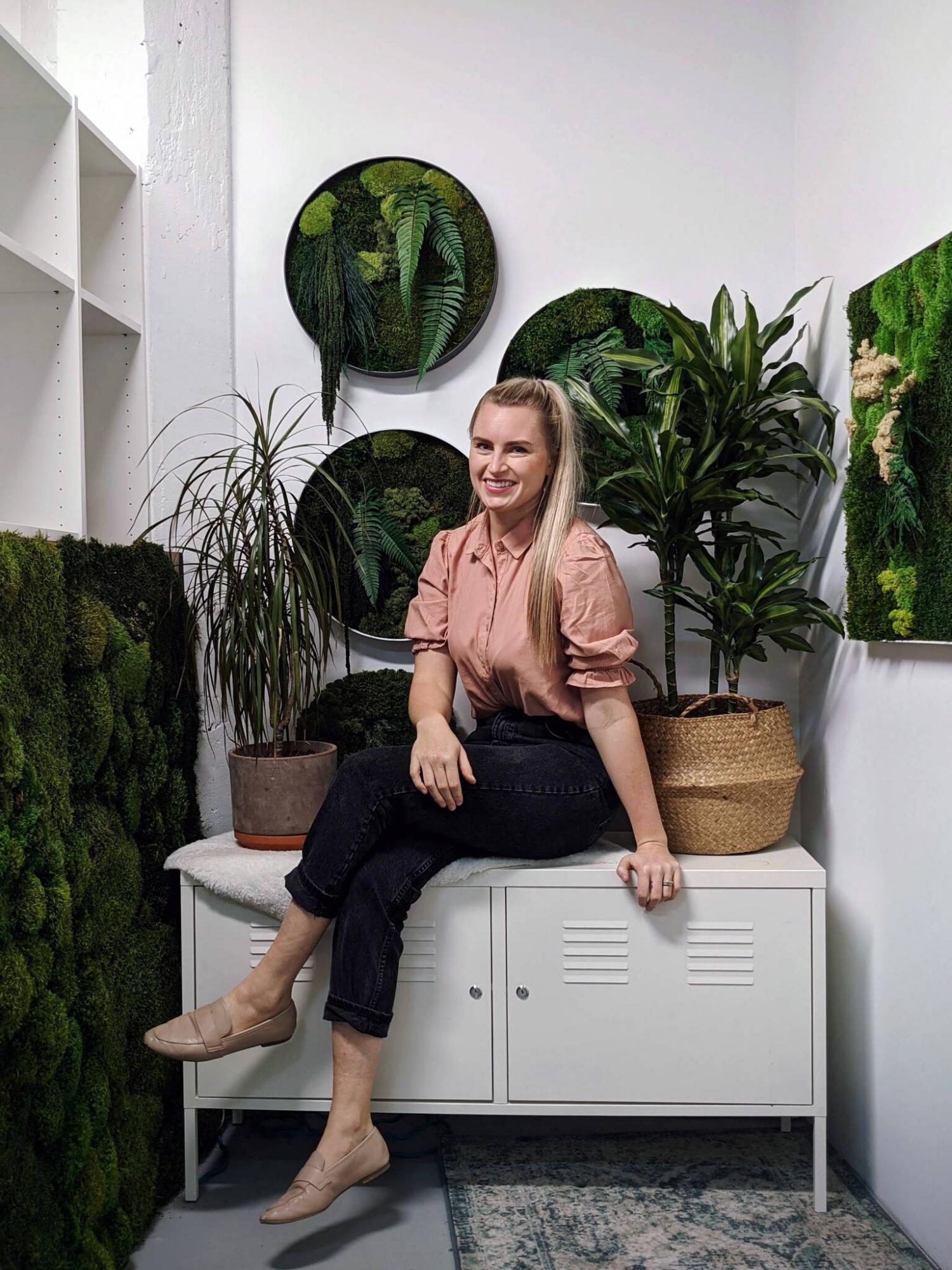
Photos by Plant Root Design Cara Anderson, owner of Plant Roost Design, brings nature indoors with preserved moss and foliage.
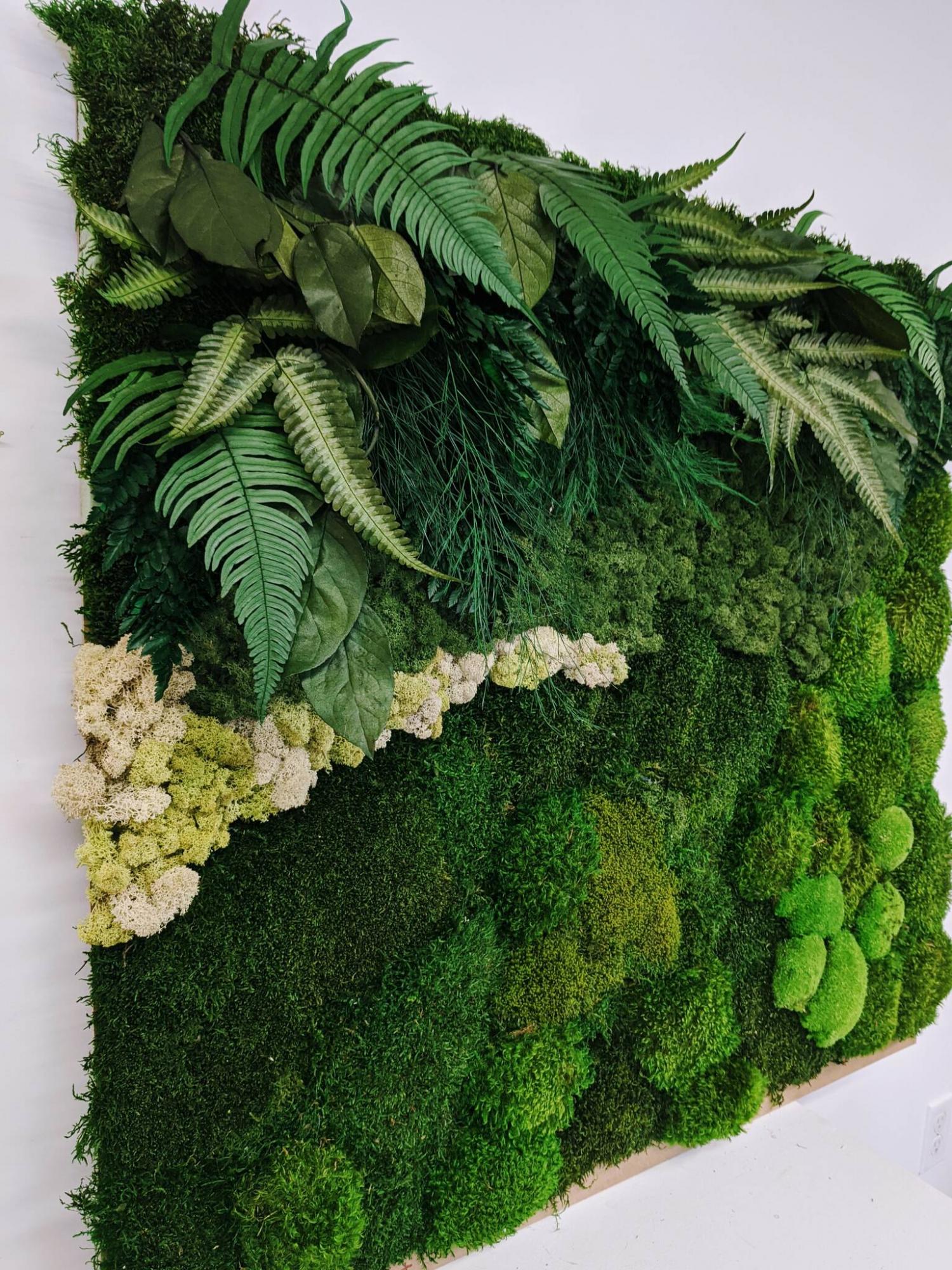
Made with 100 per cent natural mosses and foliage, preserved moss and foliage requires no maintenance other than an occasional dusting.
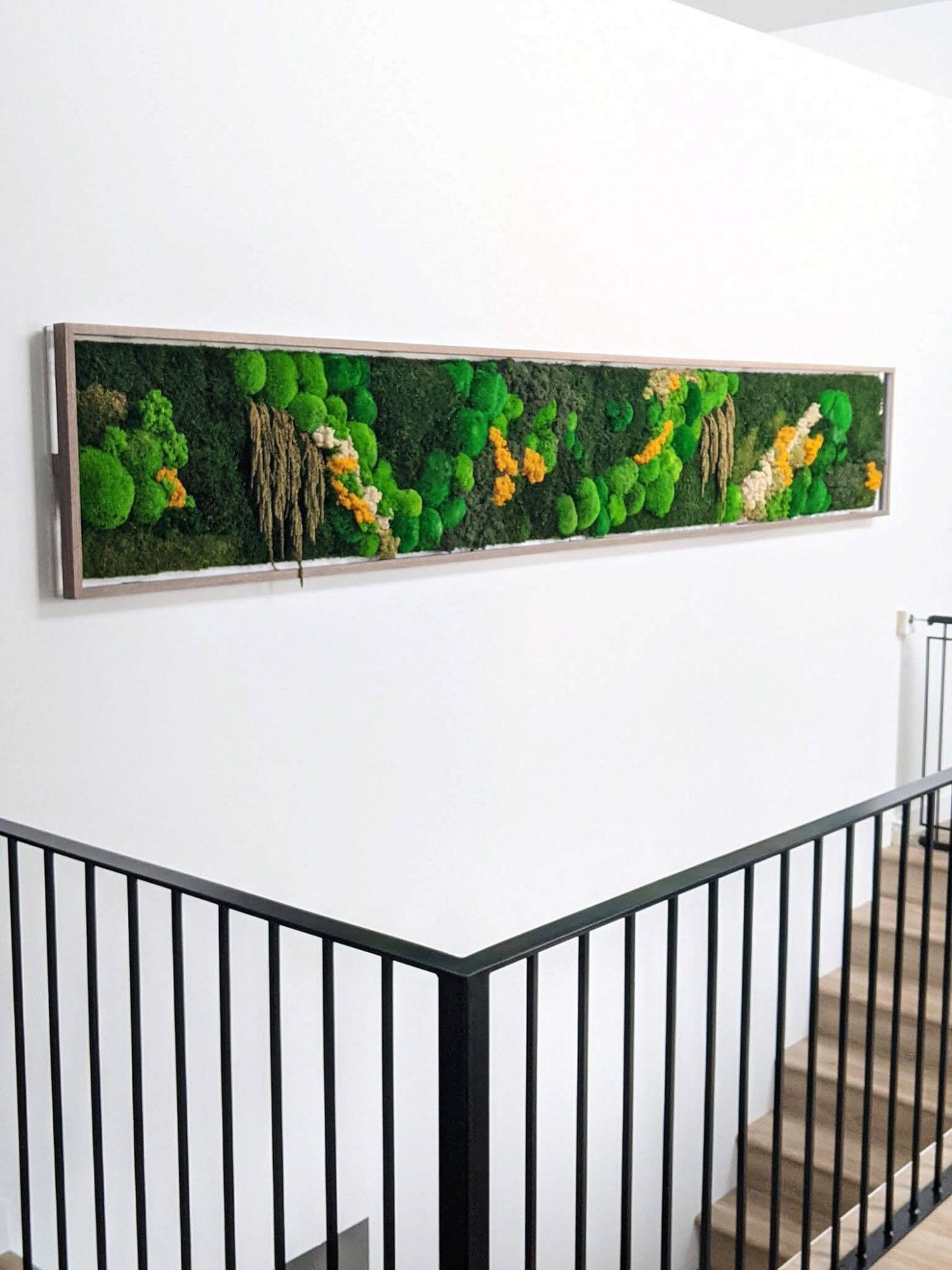
Proper placement of your moss wall will help to ensure its longevity.
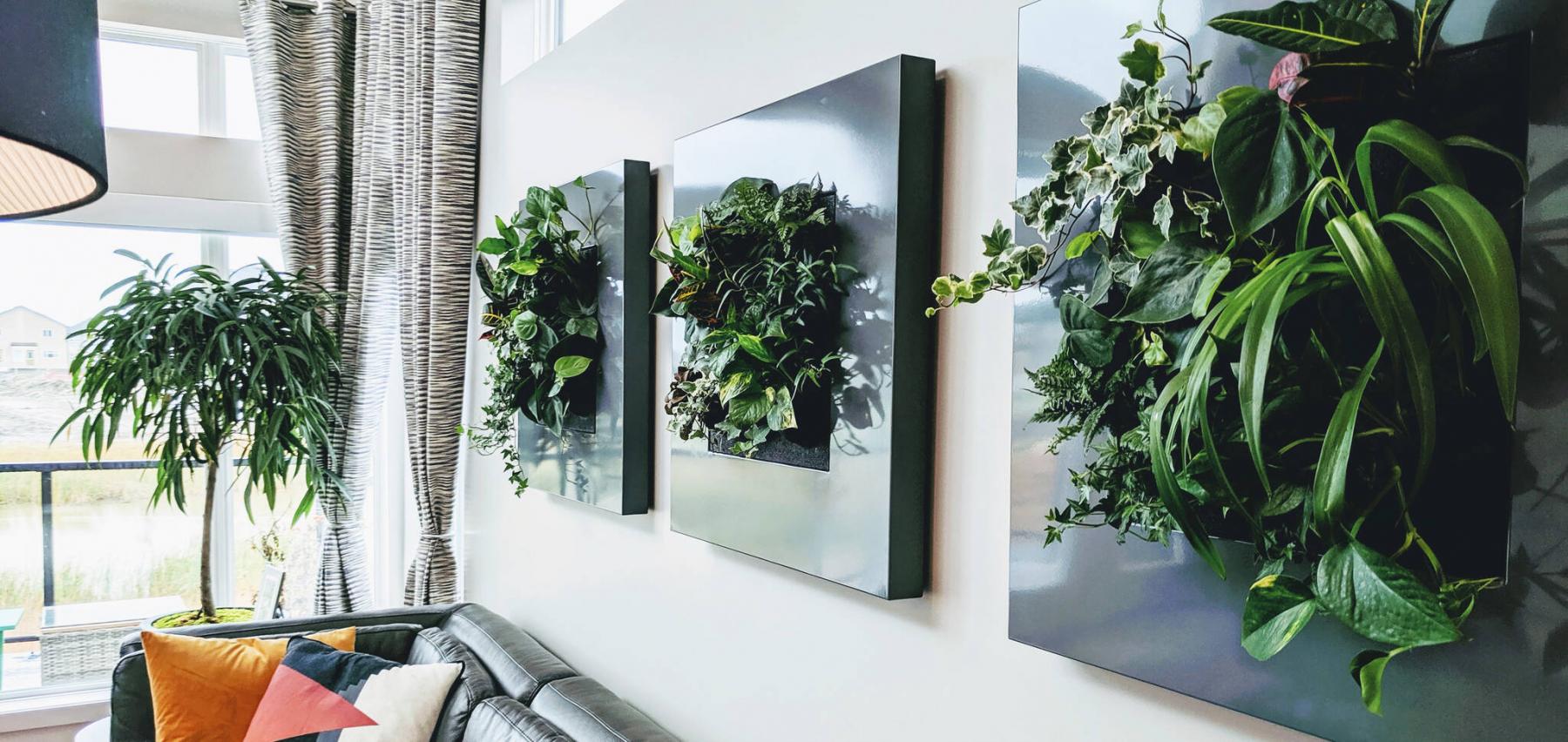
Do you have room for potted plants or would a living wall with a self-watering system suit your lifestyle better?
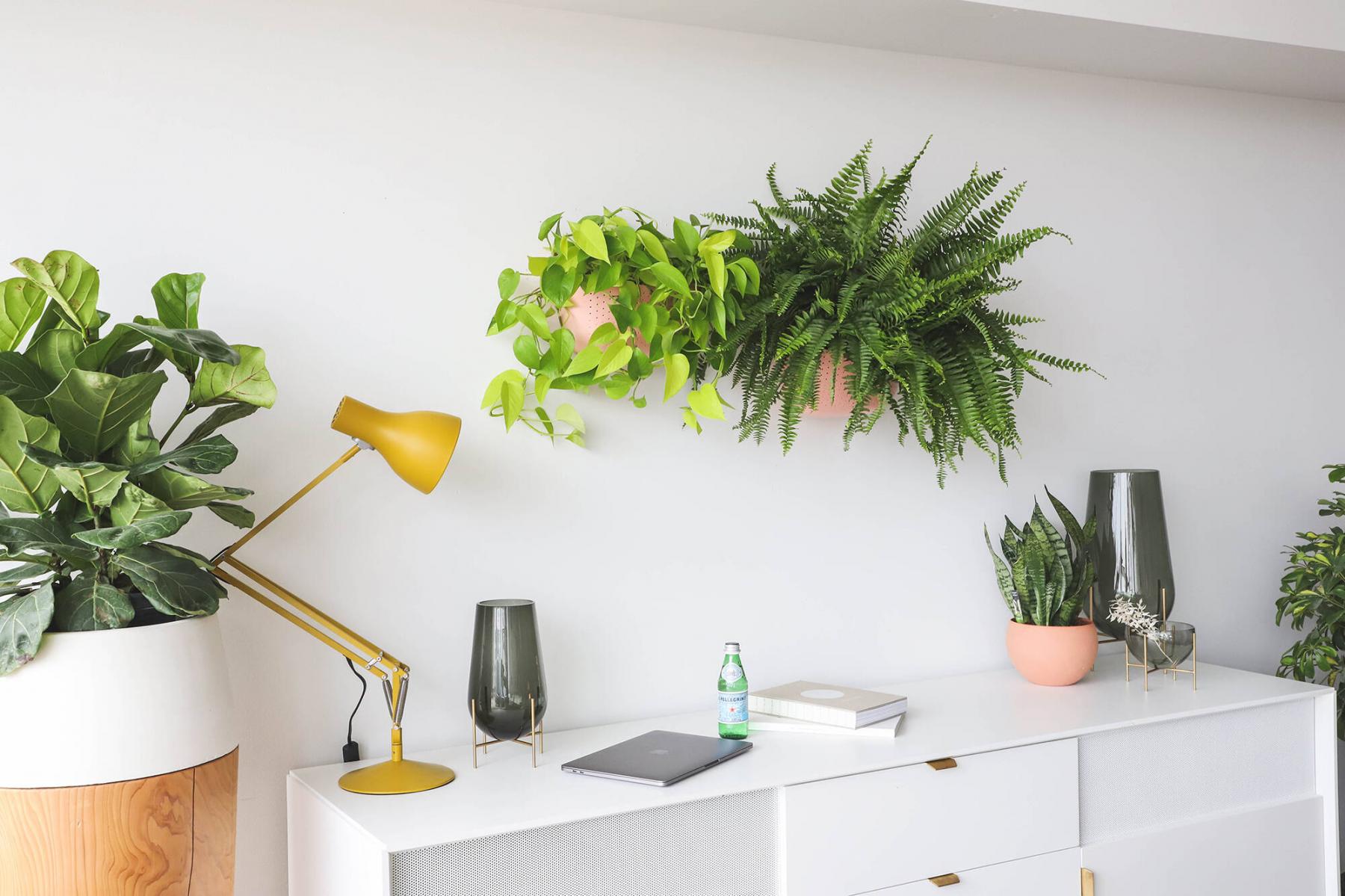
Cara Anderson specializes in interior plantscaping. The owner and designer of Plant Roost Design, a Winnipeg-based business, Anderson graduated from the University of Manitoba in 2013 with a Bachelor of Environmental Design degree. While working in the interior design and architecture industry for several years, Anderson started to question the amount of synthetic materials that were used in interior spaces as well as the industry’s waste problem and began exploring alternative sustainability-driven solutions for enhancing interior environments.
Since 2018, Anderson has been creating projects for both commercial and residential clients that use preserved moss and foliage rather than living plants. The use of preserved moss and foliage is growing in popularity, says Anderson, because it is a way to add greenery to interior spaces without the need for maintenance — or at least, a bare minimum of maintenance compared to the demands of caring for living plants.
Anderson designs with 100 percent natural mosses and foliage that are preserved with a non-toxic natural resin such as vegetable glycerin. No soil, watering, sunlight, trimming, or repotting required. And no bugs. Preserved moss and foliage lasts much longer than dried moss and foliage. Moss walls, for example, can last 10 to 15 years or longer.
Anderson also designs with living plants but acknowledges that not everyone has an interest in maintaining plants nor the floor space for a large houseplant or multiple potted plants. Existing light conditions (as in not enough sunlight) can also be a factor. Other factors such as pets and young children come into play, as well.
It’s important to consider every design decision you make, very carefully, says Anderson. “There are clients who want a really artistic and natural design — as if they were walking into a forest or jungle,” says Anderson. A large fiddle-leaf fig tree is beautiful but it’s not for everybody, she says. Elevating plants frees up floor space. Anderson offers living walls with self-watering systems that only require a four-week watering cycle. While some living walls are complex and elaborate, there are also smaller options to suit your budget.
Anderson follows a biophilic design approach that strives to connect people to the natural environment. Biophilia is not a new concept. The health and wellness benefits that stem from spending time in a natural environment were observed and written about centuries ago. “Incorporating biophilia into a space such as plants, living walls or moss walls, should be seen as an investment in your space, like any other high-end material or feature,” says Anderson. “These elements are not simply ornamental decor but have so many key benefits that outweigh the cost. They should be seen as essential elements of a space, never an afterthought.”
When arranging the different foliage and mosses that she works with, Anderson strives to achieve a believable design, that is, a design reminiscent of a forest floor which naturally would be home to a variety of plants with different textures and dimensions. Most people, she says, have the initial reaction, “What is that and is it living?” Part of this curiosity is because the types of moss and foliage she works with are not what we would see commonly growing here. “Biophilic design stimulates curiosity which is one of the ways it boosts productivity and decreases stress levels,” says Anderson.
“Everybody who sees a moss wall wants to immediately touch it, which is the same reaction we experience if we are walking outside or in the forest.” Each one of the mosses has a different texture, she says, but generally, they feel soft. There are some textures that are rougher or have a grainy feel. Preserved foliage looks exactly like a living plant but has a slightly waxy feel similar to plastic. Does it matter if your guests want to reach out and touch your moss and foliage wall? Not as long as it is a fairly gentle touch, says Anderson.
Treat your moss wall as you would any art piece and it will last longer, she says. To maintain preserved plants, Anderson recommends using a blow dryer or compressed air to remove any dust that may accumulate. Choose a location for your wall art that does not receive direct sunlight. Ideally, the humidity level should be about 45 per cent. “If the humidity level goes below 40 per cent, then the outer surface of your moss wall might feel harder to the touch,” says Anderson, “but it should bounce back in the summer.” No spritzing is required or recommended. Also, don’t situate your moss art close to ductwork or drafts. It’s important as well to consider the amount of traffic that an area receives. Will you be walking by it every day and brushing against it, for example?
Framing is also strategic. “Frame it in a way so that the frame depth is larger than the moss depths so that it adds a barrier on the outside of the moss,” recommends Anderson. “If a frame is not in your budget, consider how the edges look because now you have more of a live edge moss wall.”
Some of the different types of foliage that Anderson uses in her designs include ferns, amaranthus, salal, and eucalyptus. “These work really well together and have good longevity,” she says. ““Generally my preference is to use a mixture of foliage and multiple types of mosses so that it looks the most natural and organic.” Interestingly, the mosses and foliage all have a different scent to them. Everyone has a different opinion on scent, says Anderson, but the earthy scent dissipates over a month or two.
Mosses are ancient plants and are classified as bryophytes (Bryophyta) in the plant kingdom. They are very slow-growing, long-lived, and often very specific to where they grow. How sustainable is the practice of harvesting moss? Does it matter where moss is harvested? These are important questions and Anderson says she takes them seriously. It is critical that mosses be sourced from a grower that produces them sustainably. Anderson’s supply of moss comes from a reputable Canadian supplier who sources it from Europe according to ecological practices. The EU habitat directive regulates the harvesting, transportation, and trading of species. Anderson is experimenting with composting preserved moss to see how easily it breaks down.
Anderson’s studio is at Cre8ery Gallery and Studio, 125 Adelaide St. She works exclusively with local businesses such as Creative Stewardship Methods for her installations as well as woodworking and Tailor-Made Metal which makes welded aluminum frames in a variety of shapes and sizes.
While research has shown that plants can boost your productivity and increase health and wellness, there are other biophilic elements, too, says Anderson. “Even just having wood in a space or sunlight shining through your windows or good air quality and a view to the outdoors can connect you to nature.” Anderson gives the example of Fallingwater, a famous house designed in 1935 by renowned American architect Frank Lloyd Wright that is built over a waterfall and incorporates all of these elements. “The more natural elements you have in your living or workspace, the better,” says Anderson. “What matters is that all of the elements work well together.”
colleenizacharias@gmail.com

